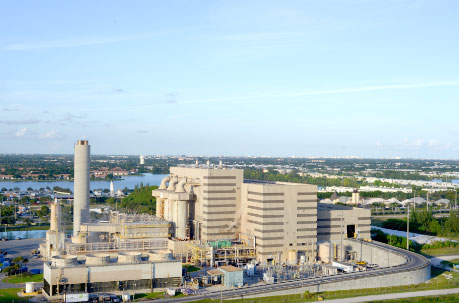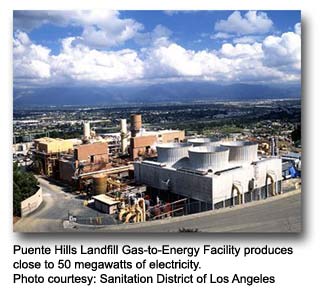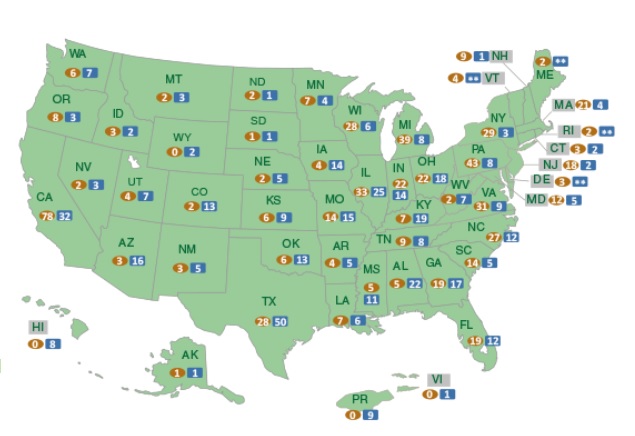Begin with the Bin – Be smart with your recycling and garbage.
As landfill waste decomposes, it produces methane and other gases. More than 75 percent of this gas is available for use as “green” energy. Landfill gas can be used to generate electricity, or it can be piped directly to a nearby manufacturing plant, school, government building and other facility for heating and cooling.
Trash, buried beneath a layer of soil, decomposes and produces gas. Landfill operators place collection wells that act like straws throughout a landfill to draw out the methane gas. The gas is then piped to a compression and filtering unit beside the landfill. Technicians make sure that the gas is filtered properly before it is sent to its end user. The entire process is carefully managed to prevent odors and leakage of waste material.
According to the Environmental Protection Agency (EPA), as of July 2014, there are 636 operational projects in 48 states generating nearly 2,000 megawatts of electricity per year and delivering enough renewable energy to power nearly 1.1 million homes and heat over 700,000 homes. It is worth noting that the Nobel Prize-winning Intergovernmental Panel on Climate Change states that landfill gas recovery directly reduces greenhouse gas emissions. The EPA estimates that using methane as renewable energy instead of oil and gas has the annual environmental and energy benefits equivalent to:
Higher energy prices have helped these activities become one of the fastest growing segments of our industry. As of July 2013, EPA estimates that about 440 additional landfills currently are candidates for landfill-gas-to-energy projects, with the potential to produce enough electricity to power 500,000 homes. And continued innovation will allow us to expand the use of landfill gas for energy. One example is a “bioreactor”: a landfill where liquids are added to the waste and re-circulated to make the trash decompose faster and speeds the production of landfill gas. This is not a hypothetical technology – this is happening now.
Download our new Landfill Gas Renewable Energy Fact Sheet.
Read the original Begin with the Bin article here: http://beginwiththebin.org/innovation/landfill-gas-renewable-energy




